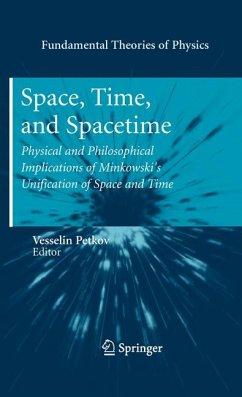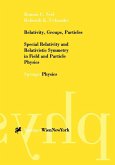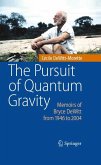In 1908 Hermann Minkowski gave the four-dimensional(spacetime) formulationof special relativity[1]. In fact,HenriPoincare[ ¿ 2] rst noticedin1906that the Lorentz transformations had a geometric interpretation as rotations in a four-dimensional space with time as the fourth dimension. However it was Minkowski, who succe- fully decoded the profound message about the dimensionality of the world hidden in the relativity postulate, which re ects the experimental fact that natural laws are the same in all inertial reference frames. Unlike Poincare, ¿ Minkowski did not regardspacetime - the uni cation of space and time - as a convenientmathematical space, but insisted that this absolute four-dimensional world, as Minkowski called it, represents physical phenomena and the world more adequately than the relativity postulate: "the word relativity-postulate. . . seems to me very feeble. Since the pos- late comes to mean that only the four-dimensional world in space and time is given by the phenomena. . . I prefer to call it the postulate of the absolute world"[3]. The impact of Minkowski's ideas on the twentieth century physics has been so immense that one cannot imagine modern physics without the notion of spacetime. It would hardly be an exaggeration to say that spacetime has been the greatest discoveryinphysicsofall times. Theonlyotherdiscoverythatcomesclosetospa- time is Einstein's general relativity, which revealed that gravity is a manifestation of the curvature of spacetime. But it was the discovery of spacetime, which paved the way for this deep understanding of what gravity really is. Einstein saw the link betweenthegeometryofspacetimeandgravitationonlyafterheovercamehis initial hostile attitude toward the notion of spacetime.
Dieser Download kann aus rechtlichen Gründen nur mit Rechnungsadresse in A, B, BG, CY, CZ, D, DK, EW, E, FIN, F, GR, HR, H, IRL, I, LT, L, LR, M, NL, PL, P, R, S, SLO, SK ausgeliefert werden.









